By this point, union electrician and auto enthusiast Kitt McNair has owned his Honda S2000 for a fairly lengthy period. While Honda vehicles have primarily been his badge of preference, Kitt’s automotive roots dig far deeper than the average “It’s JDM, yo!” schlock you see spread across the local parking lot.
Mr. McNair comes from a long line of gearheads, and he is proud to admit that his father, along with all of his uncles, always insisted upon owning and driving American muscle. Kitt’s late uncle, Tim, was a particularly potent influence in this respect — he was the one who bought Kitt his first car, a “fire engine red” 1990 Chevy Cavalier Z24, with the 3.1-liter V6 and five-speed manual package option.
Kitt recalls that good old Uncle Tim owned and routinely drove almost every performance GM car you can imagine. The guy hauled around in everything from a 1977 Can-Am to a 1990 Typhoon, and onward, to a string of C3 and C4 Corvettes at one point or another. He even managed to get his hands on an ultra-rare Monza Mirage, complete with period-correct livery and sharply raked aero — a car that would, in turn, influence Tim’s nephew to build his own rendition of the retro rocketship.
Photos By: GingerbeardmanPhoto
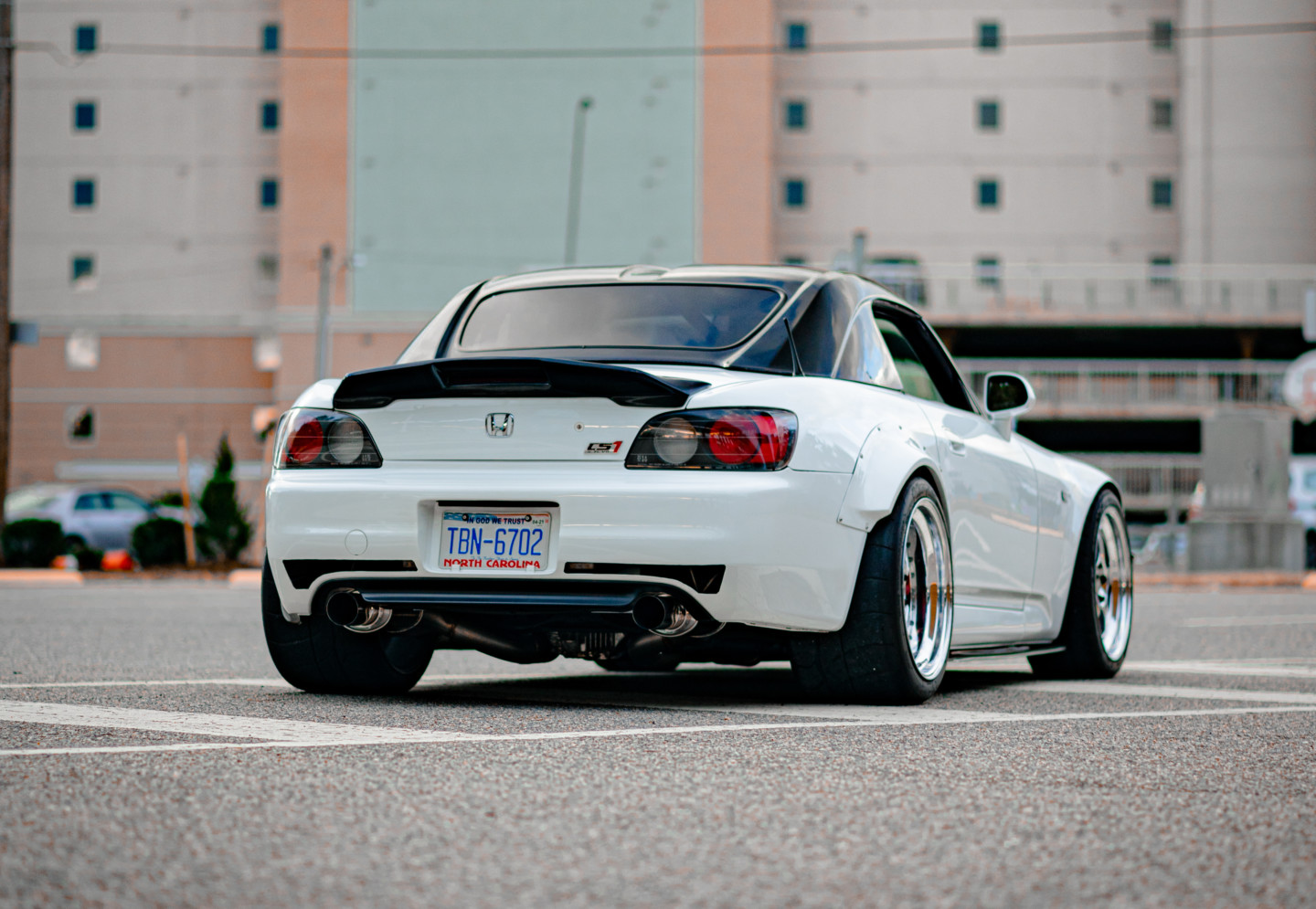
Itty-bitty, but extremely agile, the Honda S2000 remains highly revered as one of the greatest corner-carving automobiles of all time.
Enter the S2K
While Uncle Tim is no longer with us, we think he would be quite amused by the vehicle we are ogling over today because while Kitt’s S2K may have been born in Japan, it has a heartbeat that is all American.
First picked up in June of 2006, this AP1 chassis met its current owner just five short years after rolling off the production line in Tochigi, Japan. As the story goes, Kitt came across the highly coveted Honda while selling his old Acura Integra to a guy in Richmond, Virginia. During the transaction, the buyer casually asked what Kitt was looking to build next, to which he replied that a Honda S2000 was the ideal candidate.
The next day, Kitt received a link to a Craigslist ad that the Integra buyer thought might interest him. It was a 2001 Honda S2000, and according to the online posting, the vehicle had been priced to sell quickly due to the owner being relocated for active military duty. After contacting the seller and confirming the sale’s authenticity, Kitt took off work the following Friday and drove down to Fayetteville, NC, with cash in hand and high hopes on his mind.
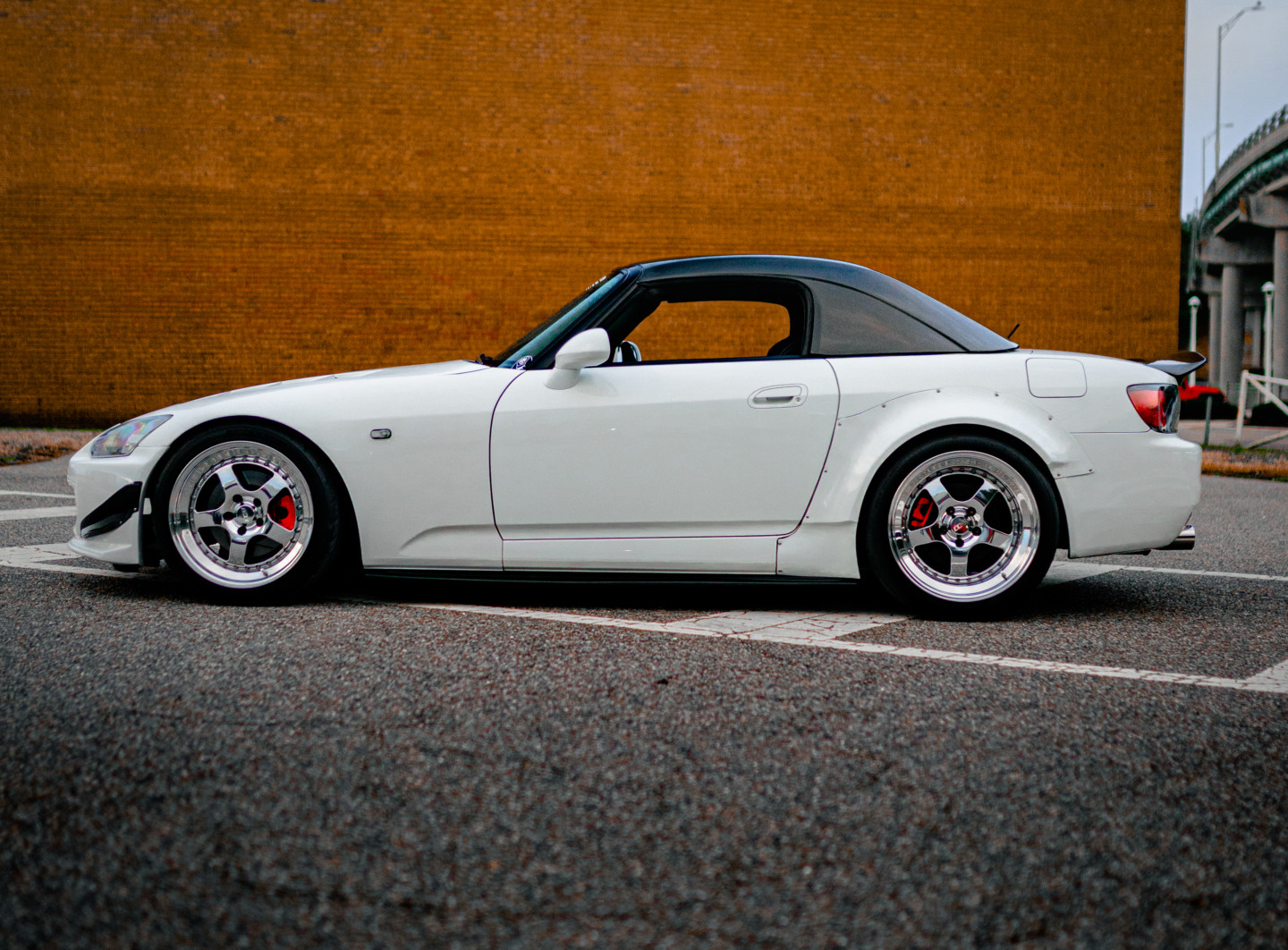
Have you ever stood next to a Honda S2000 or climbed inside one? It’s no Miata, but damn are these things low-slung and little!
It took less than a split second for Kitt to fall madly in love with the Grand Prix White AP1 Honda that awaited him. The little two-seater roadster was in immaculate condition, with only 32,000 miles on the odometer and a crispy clean driving and repair record in the glovebox. An HKS exhaust and the powdercoating of all four factory wheels had been the only modifications made to the vehicle, making the low mileage S2000 all the more of a coveted commodity. Back then (well before the whole S2000 inflation craze), Kelley Blue Book had valued the vehicle at around $23,000, so getting it for $17,999 made the roadster even more appealing.
Almost 20 grand poorer but infinitely richer, McNair returned home in his pristine AP1, with high hopes of turning it into the ultimate Japanese canyon carver. Once back in his garage, the Honda enthusiast began to ponder his preferred approach to fine-tuning the vehicle. Naturally, mods materialized in the form of coilovers, engine bolt-ons, and aftermarket wheels and tires, as well as many of the aesthetic modifications that still adorn the S2000 today.
But the idea of sticking with the stock F20C inline four-banger engine was short-lived, and before he knew it, Kitt was looking toward far more potent powerplant upgrades. Forced induction considerations came and went, all while the crazy thought of stuffing a big GM V8 into the tiny Japanese micro machine kept Kitt’s pistons pumping. And so, a plan was set in place to someday, somehow, cram an LS motor into the itty-bitty Honda roadster’s engine bay.
What’s the point of having a fast car if you don’t put it to good use?

Not going overboard in the aesthetics department was one of the key reasons why Kitt McNair was able to make his S2000 appear exceedingly timeless.
Bitten By a Dragon
But before there could be an LS swap, Kitt had to live with the stock 2.0-liter inline four-banger and all of the headaches that come with the high-revving F20C motor and its plucky six-speed manual transmission.
It was 2010, and Kitt and his wife had just driven nine hours down to Deals Gap in North Carolina so that Kitt’s S2000 could stretch its legs on the legendary Tail of the Dragon. There was an “S2000’s only” event being held that weekend, and Kitt was looking forward to seeing what his machine was capable of on one of America’s most challenging mountain roads.
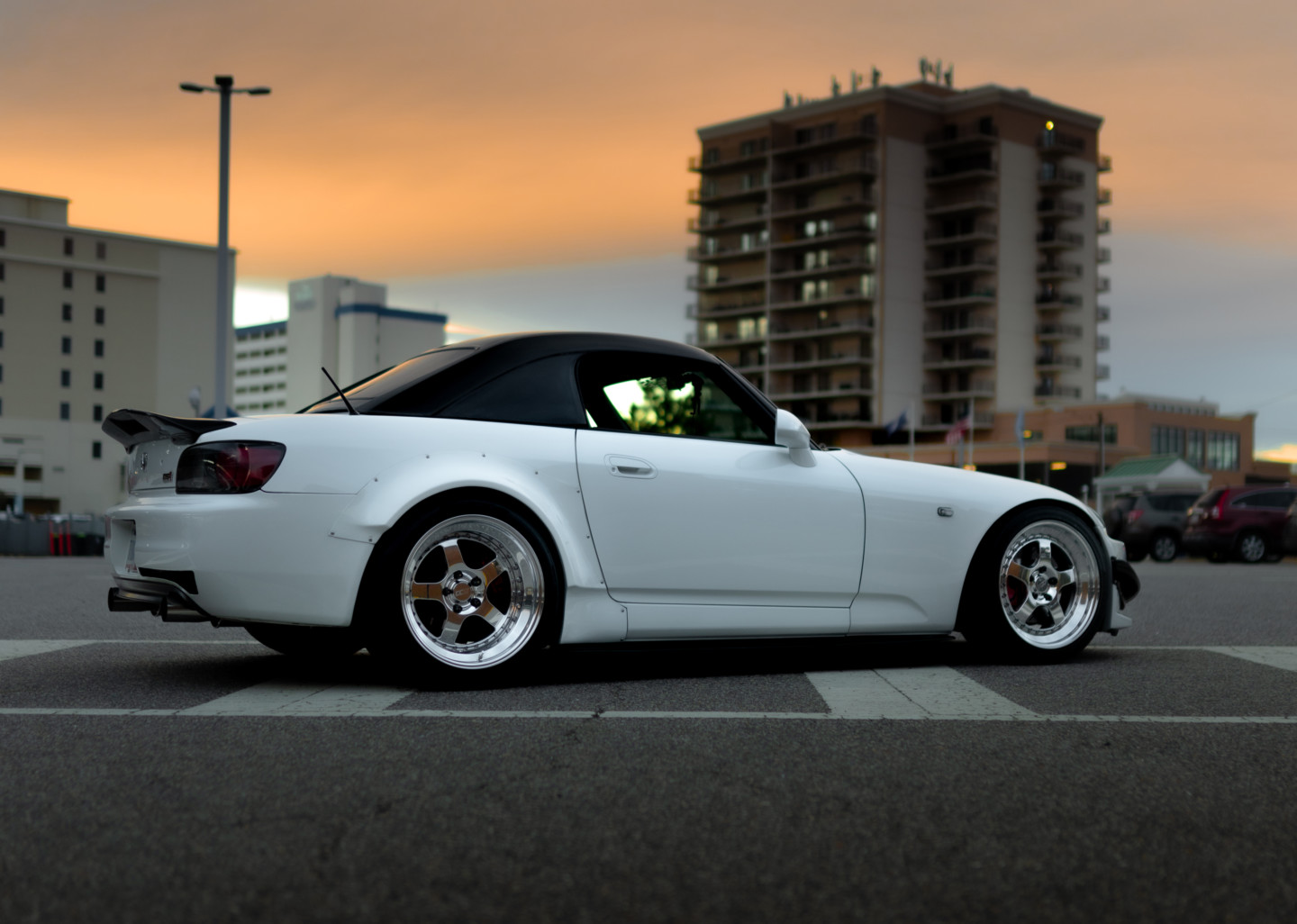
An LS1 swapped Honda S2000. Where lightweight agility and timeless curb appeal meets raw American straight-line speed and boundless amounts of torque.
Grabbing “The Dragon” barehanded by the tail is always intimidating, especially when it’s your first time, and you suddenly realize that there are dangers and distractions at every turn. From idiots on crotch rockets jumping double yellows and people trying to take selfies while driving to the never-ending stream of stunning waterfalls and breathtaking mountain lookouts, Kitt found himself focusing on the slithering mountain asphalt with all of his might.
Yet both he and his Honda performed admirably, and on the last day of the event, all 200-plus Honda roadsters lined up for what was to be an orchestrated cruise down the Tail of the Dragon. Nothing crazy. Just a cruise, which is when things suddenly went wonky.
Right as Kitt was starting to get the hang of this insanely gorgeous drive, one of the springs in his clutch broke on the returning leg of the cruise. While the snapped spring did not render the vehicle inoperable, it did manage to lodge itself in the flywheel, resulting in an insanely loud buzzing sound. Needless to say, the nine-plus hour drive back home was obnoxiously loud for both of the vehicle’s occupants, as everyone on the road stared at the angry bumblebee that blasted past them on the interstate.
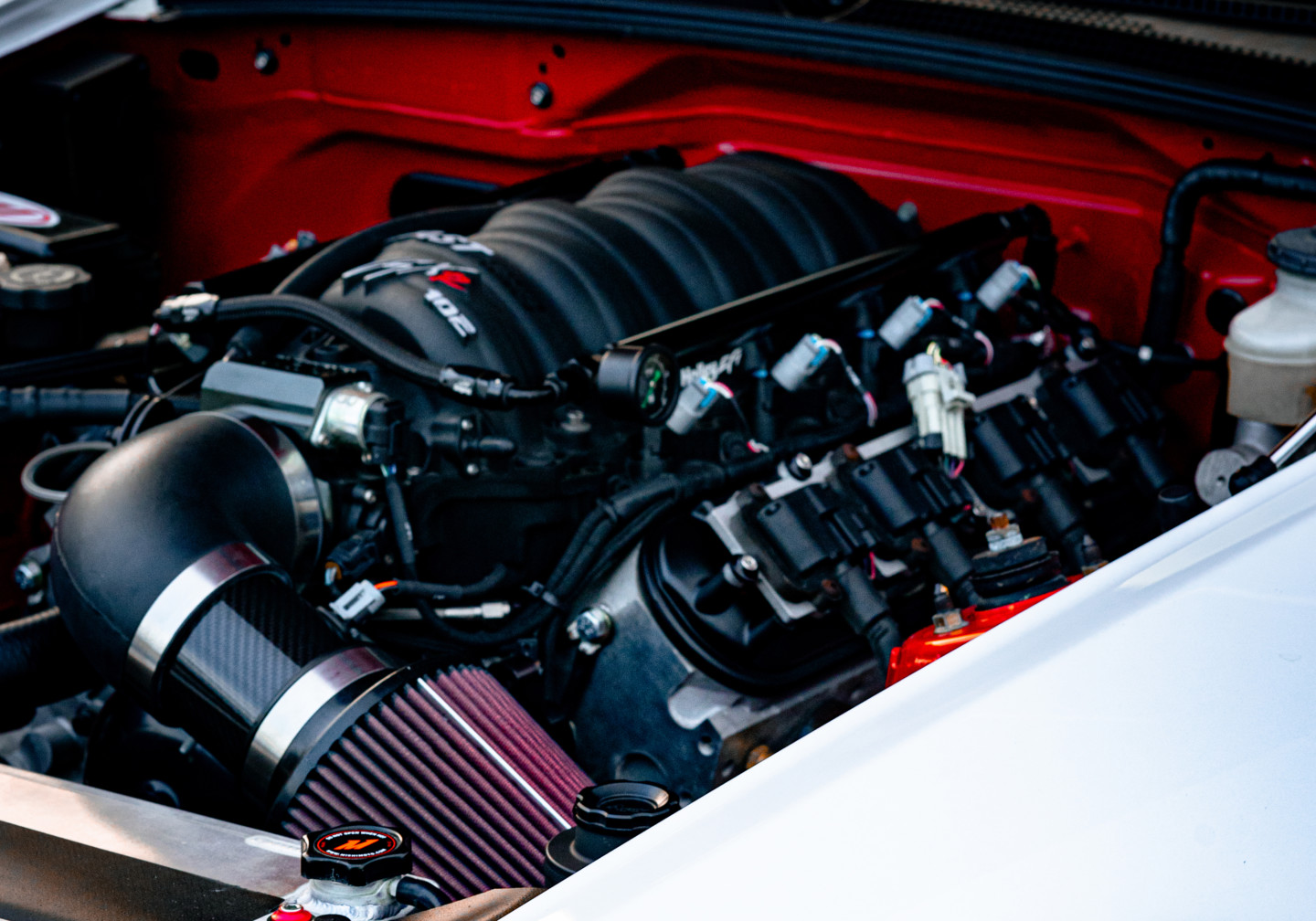
Packing an LS1 with a few choice bolt-on additions into an engine bay that was built around an inline 4-cylinder was no easy task. Yet here it sits…
Big American V8 Meets Japanese Canyon Carving Time Capsule
Clutch racket repaired, Kitt returned to modding the roadster, as his four-year quest to create a Honda with a stout V8 stuffed under the hood continued to fuel him onward. Unfortunately, LS-swapped S2000’s are still a bit of an anomaly, so getting the GM V8 to sit just right and safely clear the elongated engine bay was going to be a bit of a challenge. Kitt knew that in order to do so, he was going to need some serious assistance.
Getting the motor to mate up with the S2000 chassis meant sourcing a set of AlloyWerks engine and transmission mounts, along with a billet conversion kit for a Camaro, courtesy of Import Muscle. During this time, an LS1 engine was sourced and then sent off to Ross Benton of Trust Automotive in Chesapeake, Virginia. There, Kitt’s V8 was honed and then stuffed with a modest yet potent list of aftermarket enhancements, with Benton later tackling the exhaust and tuning end of the build, as well.
Internally, the V8 received an excellent array of Brian Tooley Racing goodies, including a Stage 3 camshaft, .660-inch dual valve springs, steel retainers, and chromoly pushrods, all controlled by an MS3 Pro Evo standalone setup by AMPEFI. The 5.7-liter LS also received a COMP trunnion kit and LS7 lifters, which significantly increased the virility of the V8 when coupled with a FAST LSXR 102mm intake. And a WARR 92mm throttle body was fitted with a 3.5-inch carbon fiber intake tube and a JLT air filter.
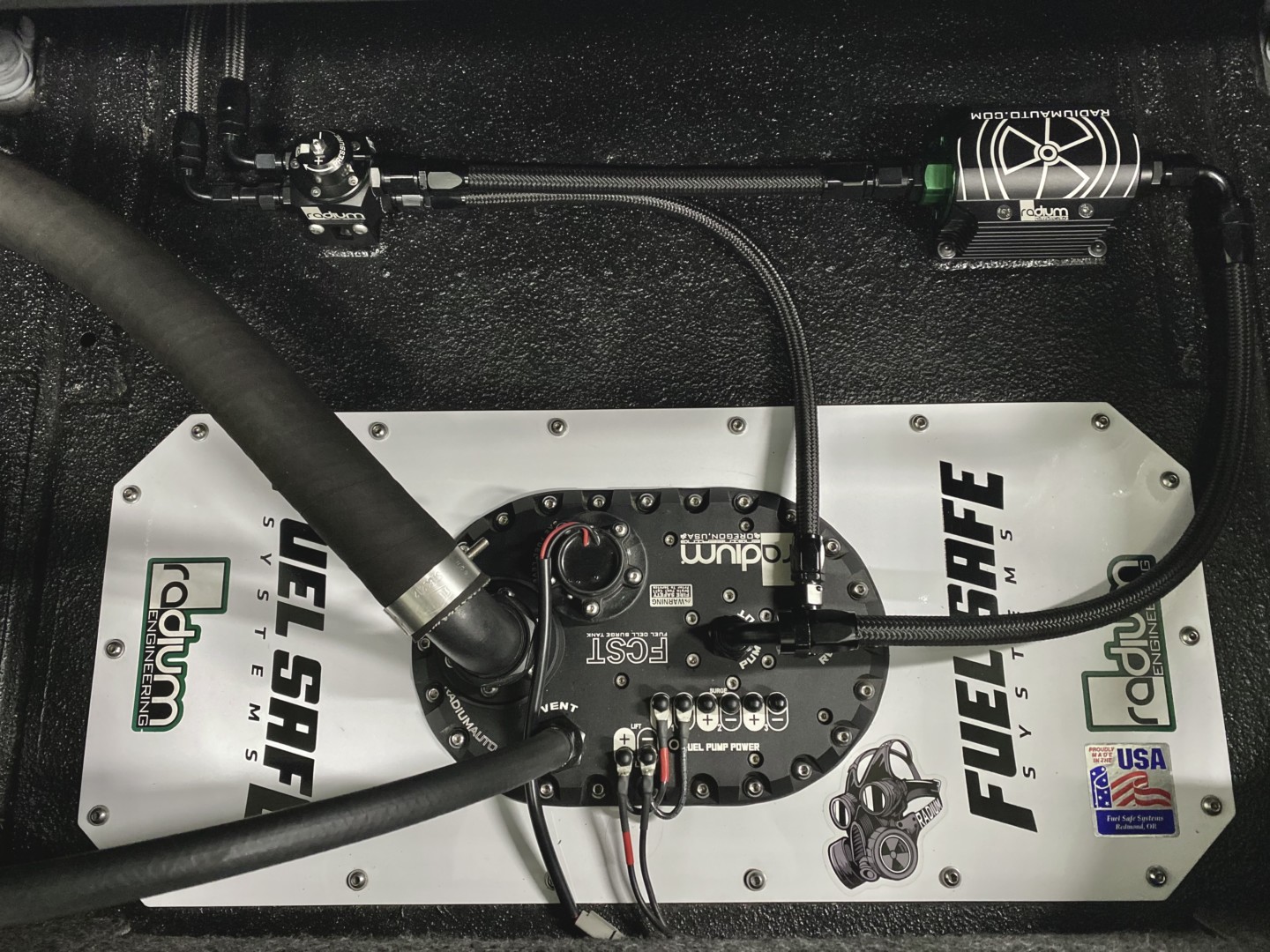
The fuel side of this S2000’s LS1 swap was without a doubt one of the most challenging aspects of this build, and many a man-hour had to be implemented to make it all work.
On the flammable end of things, Kitt opted for twin 340-lph AEM 50-1200 fuel pumps, and 42-pound injectors from Fuel Injector Clinic. A Fuel Safe 10-gallon Enduro cell was tied to a Radium Auto surge tank and fuel pressure regulator and a 12-micron fuel filter to keep those Holley EFI billet fuel rails flowing freely. Once combusted, exhaust soot is expelled from Hooker “Block Hugger” headers, downward into a Speed Engineering X-pipe, which eventually curtails into a duo of 3-inch Vibrant Performance Ultra Quiet resonators.
Cooling-wise, you’ll find a custom three-row radiator with twin SPAL fans from Jason Schmuck of Schmuckbuilt LLC, assisted by an LS2 water pump, a 180-degree thermostat, and an Earl’s Steam Vent kit. There’s also an Origin Fab custom catch can and overflow tank onboard, along with an AMPEFI mil-spec wiring harness. Both the plumbing and all of the necessary wiring relocation work were completed by Kitt, as he was eager to put his union electrician skills to good use.
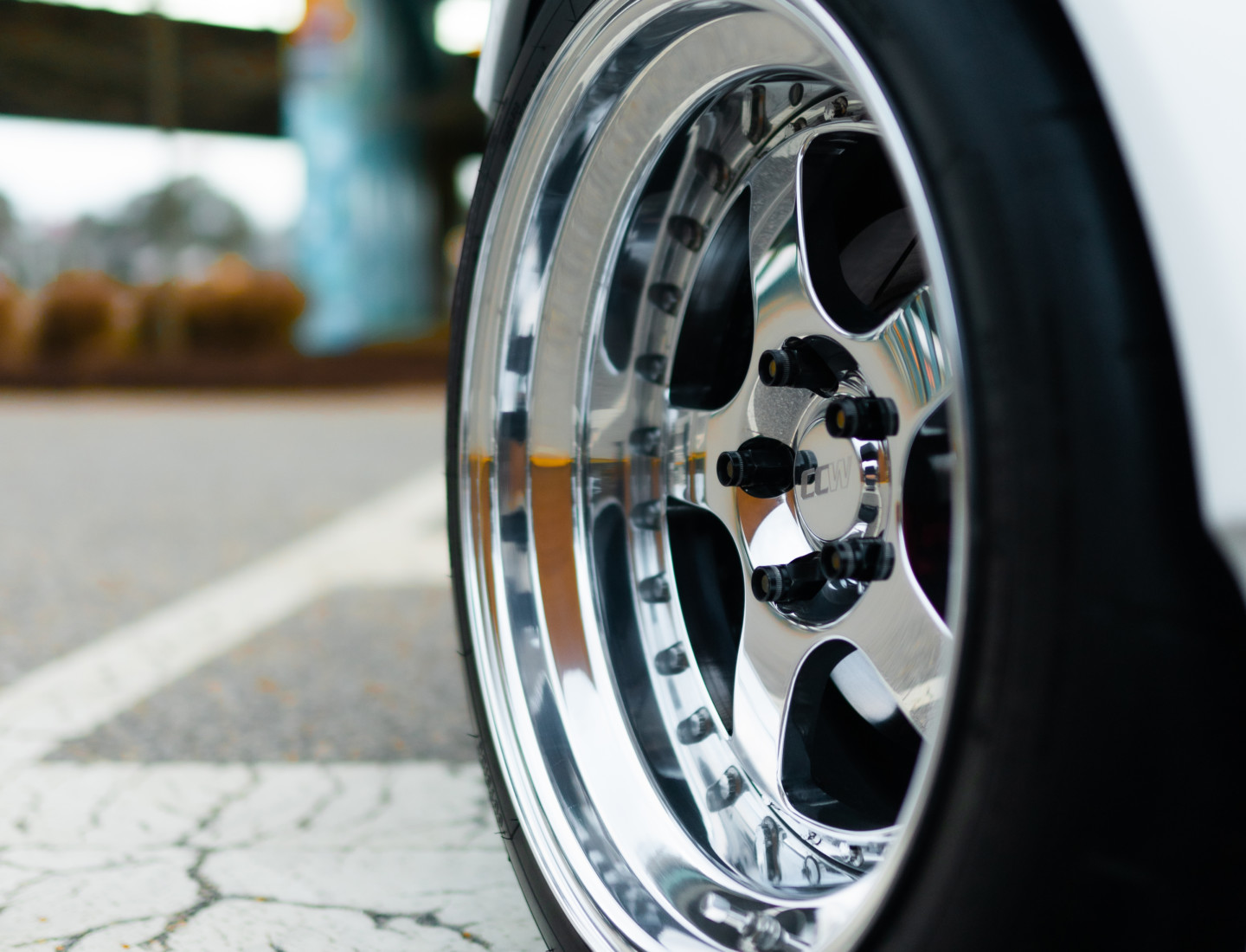
A set of CCW LM5 three-piece forged wheels are the rollers of choice on this Honda, allowing 12-inch wide rubber the ability to grip the ground out back.
As for creature comforts, the only things left inside the roadster were the power windows and the radio. The A/C and all of its lines, as well as a bunch of electrical wiring ended up in the trash. Kitt also relocated the battery and installed a Hardcore Bays ABS delete and brake line relocation kit for additional engine bay cleanliness.
The decision to go with a T56 Tremec six-speed transmission opened up the door to upgrades like a McLeod RXT twin-disc clutch and flywheel, which is controlled via MGW’s short-throw shifter kit. The six-speed sends torque to a Driveshaft Shop aluminum tube, which spins a 2012 Camaro SS rearend that’s been reloaded with a GM ZL1 3.91 final drive and an Eaton Detroit Truetrac LSD. A duo of Driveshaft Shop 600 horsepower axles come mated to the company’s line of billet hubs, which have been stuffed with ARP Bolts extended wheel studs.
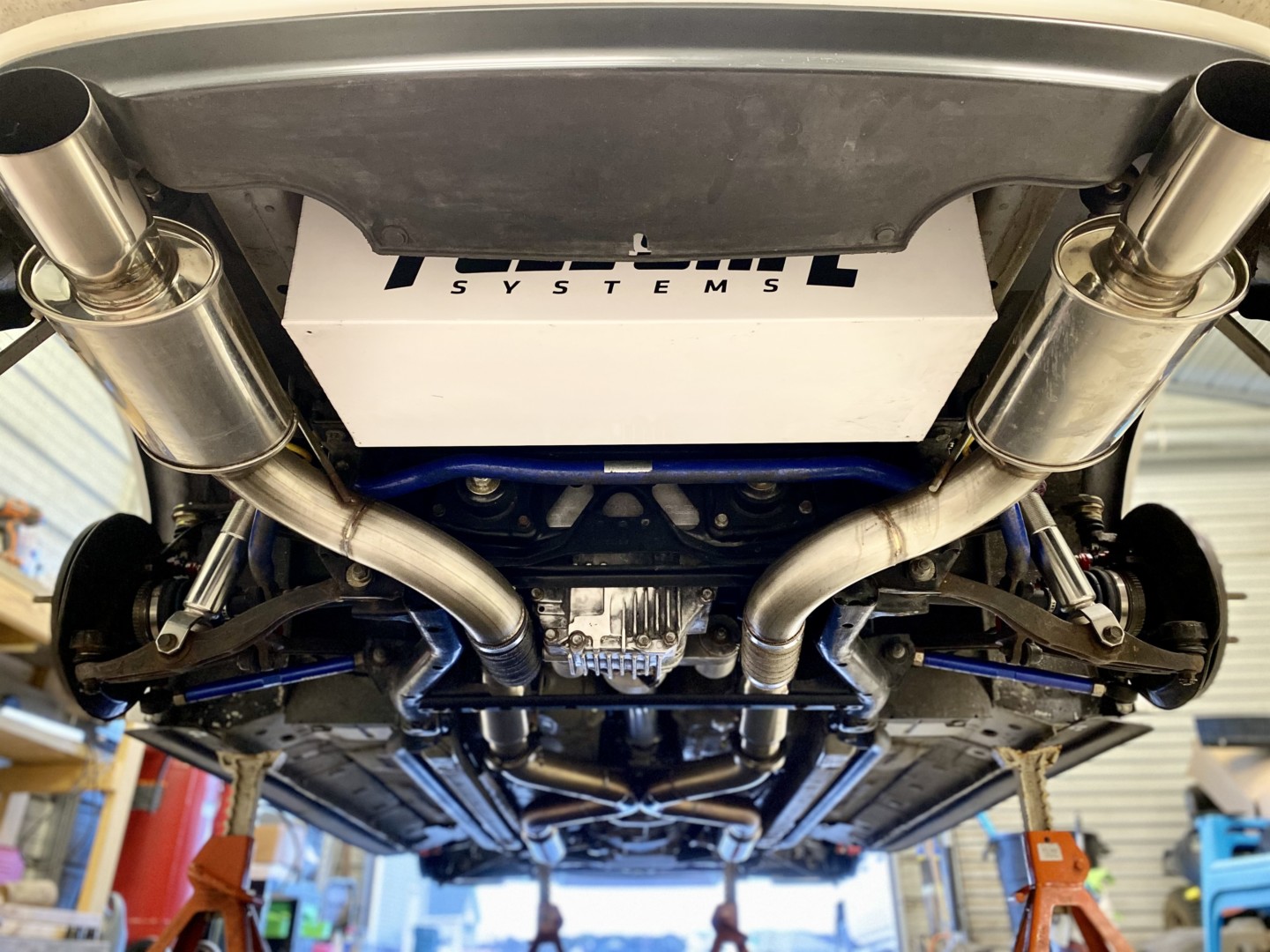
The work that went into making this Honda S2000’s LS1 fuel system functional is both astronomically intimidating and ingenious.
The Japan-American Society of Uninhibited Ingenuity
As for the act of conducting the American V8 heart transplant, that was almost entirely left to Kitt and his brother, Tyler. Together, the brothers swapped out the tired F20C engine for the reinforced LS1, along with the Tremec transmission and rearend it required. The same went for all of the engine bay, transmission tunnel, rear subframe, and other mandatory body mods. Every centimeter of the fuel system and chassis wiring were Kitt’s doing, with his brother helping with the fabrication and welding end of things.
When asked what the most challenging part of the swap was, Kitt laughs, and says “getting the nerve to start cutting was a major hurdle.” Another issue was that the LS motor was about a full 4-inches longer than the stock Honda engine it was replacing, which meant that the large cross brace toward the front of the engine bay had to go.
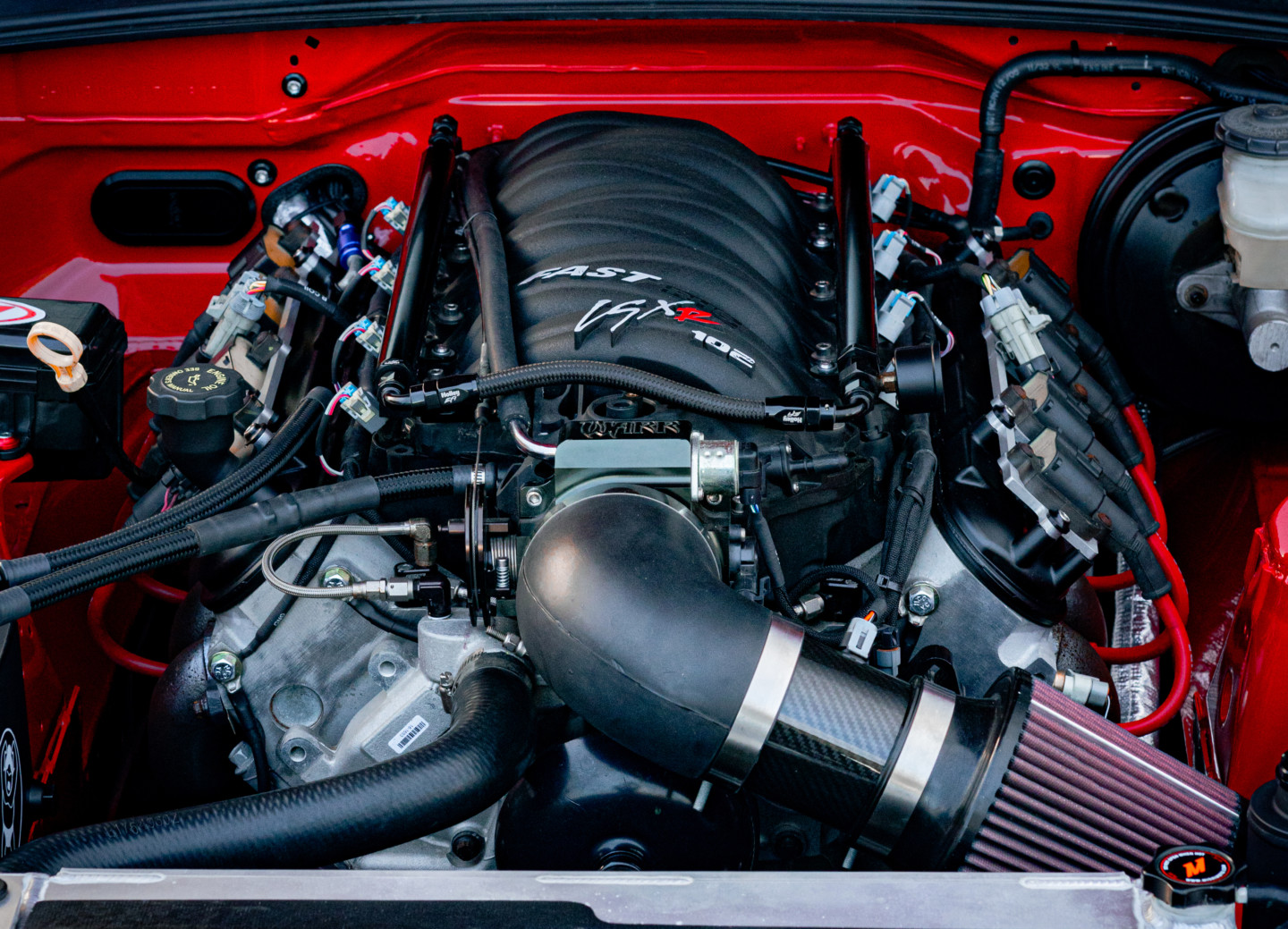
Making the decision to cut-up a super clean chassis is never easy, but seeing the finished results make it all worthwhile.
This resulted in the steering rack having a 4-5 inch dead space between it and its contact point. So Kitt decided to modify the steering shaft to discover that he had just rendered the factory tie rods obsolete. To solve this issue, the guys over at Import Muscle sent Kitt some inner and outer tie rods off an Accord and a Civic, which, when combined, successfully adjusted the telemetry of the steering system.
Trimming the channels at the top of the transmission tunnel entrance along the firewall proved to be another headache, as Kitt quickly realized in order to clear the back-end of the LS engine’s heads, some serious “massaging” had to be initiated. And then there was the fuel cell, which required hacking up a large portion of the trunk well so that it could be spot-welded and seam-sealed into a 1/8-inch steel plate. This not only covered the opening for the factory fuel tank with a frame that could secure the new fuel cell, but it allowed a layer of bedliner to be applied– a product that is highly revered for its ability to protect bare metal from fuel and other contaminants.
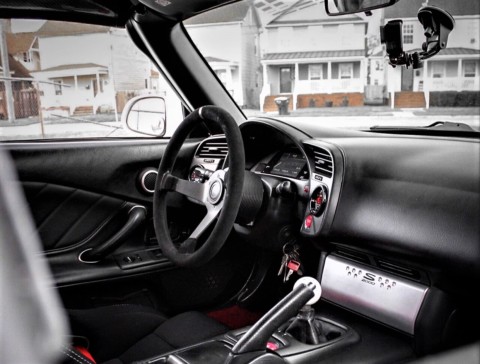
One of the most appealing things about the Honda S2000, is the way in which the cabin is conformed around the driver. Throw in a few extras for monitoring engine performance and temp levels, and you’ve got the perfect little spaceship cockpit.
Opting for All the Extras
To safely support the S2000’s newfound curb weight, a set of KW V2 coilovers were sourced, along with a Cusco 32/30mm sway bar combo, which matched up beautifully with the company’s subframe reinforcement bar. Hardrace roll center adjusters and adjustable toe arms were also installed, along with a Password JDM rear tie bar and SPC adjustable upper ball joints.
Rollers are a CCW LM5 18×9-inch front, 18×12.5-inch rear layout, with the forward-facing forged alloys rocking Nitto NT05 255/35/18 rubber, and the backset sporting Nitto NT01 tires in a 315/30/18 configuration. Kitt also upgraded the stock brakes to PowerStop calipers, complete with StopTech slotted rotors and matching steel braided lines, along with StopTech pads both front and rear.
While keeping the S2K’s Grand Prix White paint scheme in immaculate shape has been an ongoing process since day one, Kitt did decide to adorn the vehicle with some tasteful aftermarket aero additions well before the LS swap. This meant contracting Rick Boucher of Excellence Paint in Virginia Beach to add an Amuse front bumper and some ultra-rare carbon-fiber canards from Chargespeed of Japan.
Kit also installed a replica of the highly coveted carbon-fiber Mugen hardtop by Rockstar Garage, some Circuit Garage rear fender flares, a VIS Racing carbon-fiber “Top Secret” style hood, a JDP Engineering carbon-fiber duckbill rear spoiler, and carbon-fiber side diffusers from a Mazda RX-7.
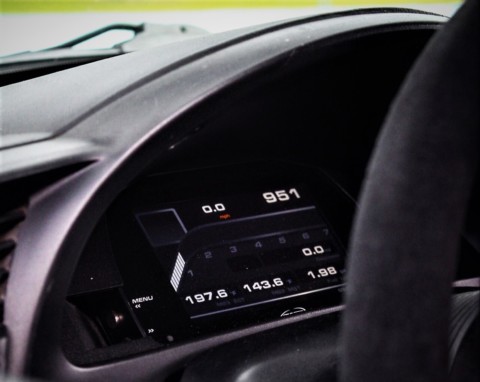
Replacing the dated digital Honda instrument cluster, is a far more vibrant and informative unit from AiM called the MXS Strada Icon.
Inside, a black and red motif remains a core focal point, with items like a Rockstar Garage double diagonal roll bar and Braum Venom R seats with five-point harnesses and PCI seat mounts and sliders adding performance safety to the AP1’s cabin appeal. There’s also a Sparco 330mm steering wheel, 3D printed pods with twin AEM X-Series UEGO wideband gauges, a Motion Raceworks USB bulkhead, and an AiM MXS Strada Icon digital cluster.
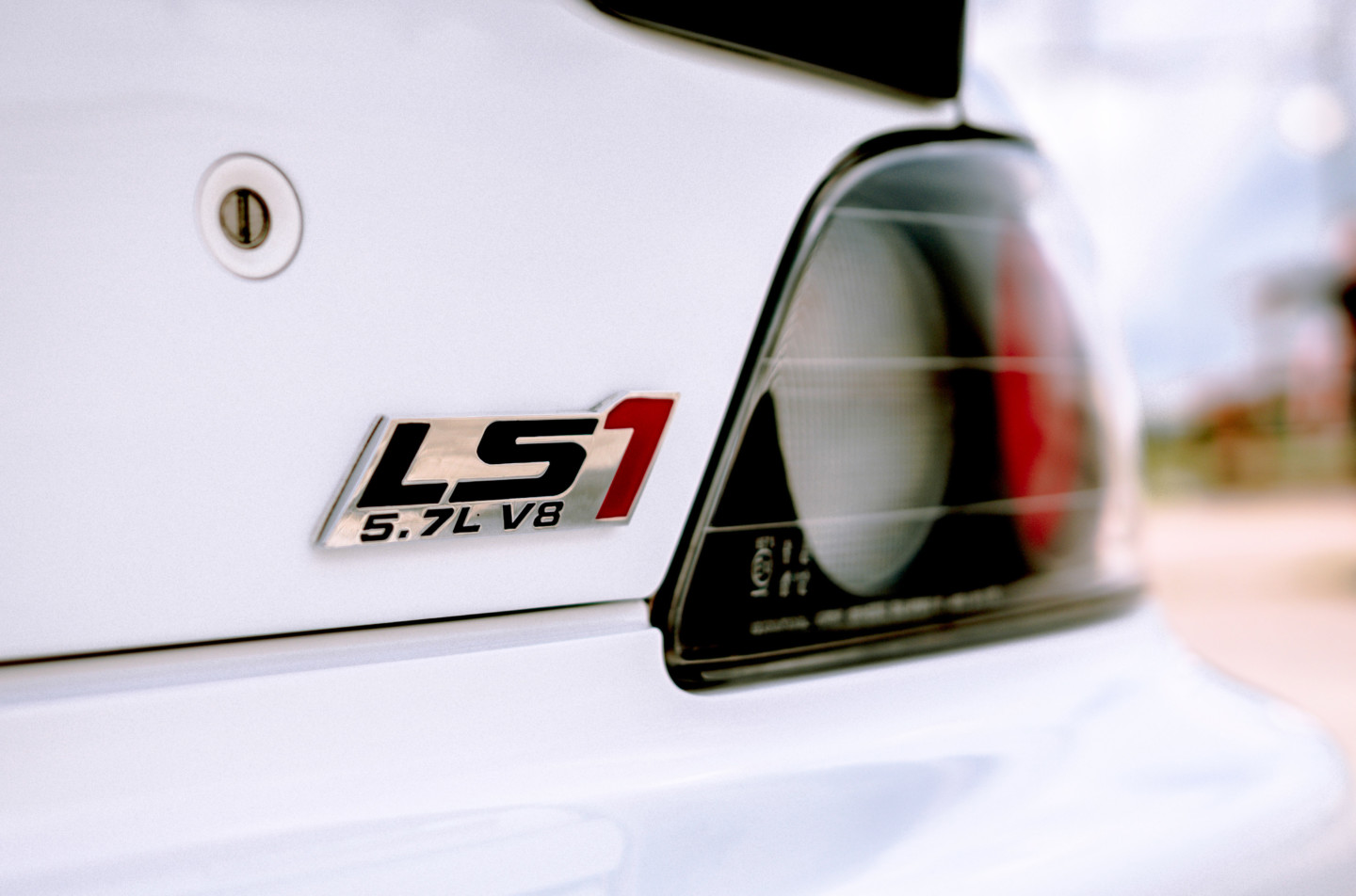
It may have taken the better part of four years, but Kitt Mcair finally managed to cram a red-blooded American GM LS1 motor into one of the world’s most virile roadsters of all time.
Drive, Enjoy, Get Pics, Make New Friends, Repeat
Swap finally complete, Kitt confesses that in retrospect, the four-year build time was totally worth it. His LS1 S2K draws a crowd any time he pops the hood, and he absolutely loves the aggressive sounds it makes when under throttle. Oh, and let’s not forget the perks of having all of that raw torque on-demand at the blip of the throttle. And while he currently does not run in any particular class, Kitt tells us that this could change once he starts to push toward that coveted 500 whp mark, either with the assistance of nitrous or via an LSA blower conversion.
Performance and handling-wise, Kitt admits that at 2,800-pounds, the engine’s 400 whp, and 370 pounds of torque can cause his S2000 to be a little “rowdy” at times, especially when in the corners. However, Kitt tells us that the vehicle is an absolute “monster on the straightaways,” and that to date, his little S2000 has logged a 12.23 in the 1/4-mile at 116.39 mph, 7.95-seconds in an ⅛- mile race at 92.77mph, with standing 60-foot times hovering right at the 1.99-second mark.
With only 1,500 miles of the 135,000-plus logged on the odometer belonging to the refreshed LS1 engine, upcoming road trips and supermarket runs alike will more than likely be quite invigorating. Perhaps that’s the real reason why Kitt made this little Honda half-breed: to make Uncle Tim shake his head in disbelief and grin ear-to-ear at his nephew’s antics and unrelenting ingenuity.




